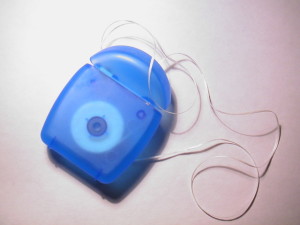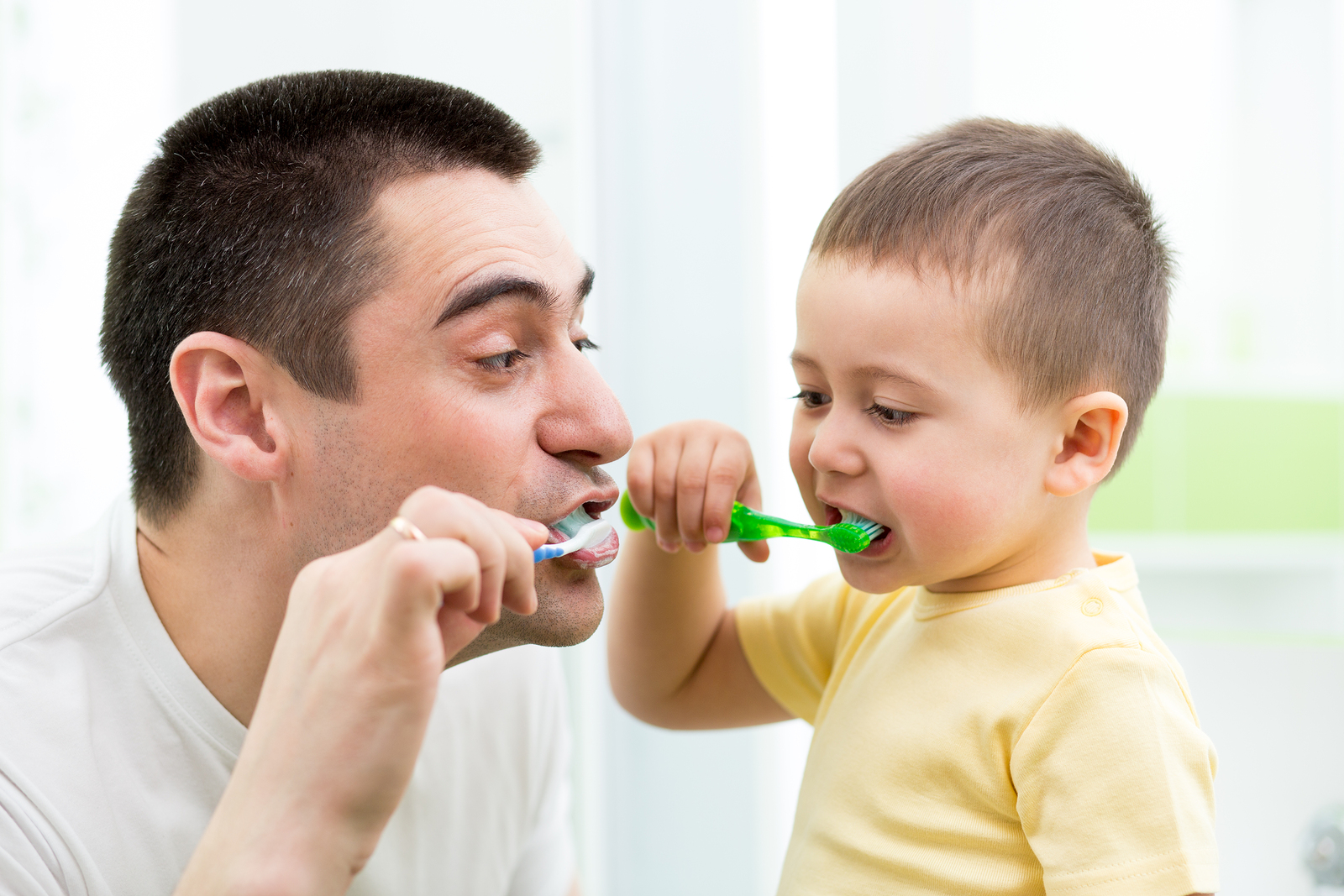By: Dr. Elizabeth Eggert
 Flossing guilt. The phenomenon is real. We know flossing is important for maintaining dental health yet many of us don’t incorporate it into our daily routine. Worse yet? At regular dental checkups, according to the American Association of Periodontology, up to 25% of us stretch the truth about our flossing frequency. (As if it isn’t evident by our swollen gums from our hasty, pre-visit floss!) Let’s cut out the excuses and commit to investing daily in our dental health by taking a look at guidelines for an easy and effective floss and addressing some common questions.
Flossing guilt. The phenomenon is real. We know flossing is important for maintaining dental health yet many of us don’t incorporate it into our daily routine. Worse yet? At regular dental checkups, according to the American Association of Periodontology, up to 25% of us stretch the truth about our flossing frequency. (As if it isn’t evident by our swollen gums from our hasty, pre-visit floss!) Let’s cut out the excuses and commit to investing daily in our dental health by taking a look at guidelines for an easy and effective floss and addressing some common questions.
HELPFUL FLOSSING POINTERS
• There are two common types of floss – nylon and monofilament. Nylon floss has a lower price point and comes in waxed and unwaxed varieties and different thicknesses and flavors. Monofilament floss, on the other hand, is a single-strand floss that doesn’t shed or tear and is typically made of plastic or rubber. You will often hear us recommend woven floss as our favorite type of floss. Woven floss is made of multiple fibers twisted together and is a very effective way to pick up significantly more plaque.
• Break off 18-24” of floss and wind it around either your middle or index fingers on both hands and secure it with each thumb.
• Don’t snap the floss into place which can be extremely painful and irritating to your gums. Instead glide the floss back-and-forth between your teeth in a sawing motion.
• As you floss, roll the dirty ends of the floss around your finger to avoid reintroducing the plaque and bacteria you’ve already removed.
• When you insert the floss between your teeth curve the floss into a “c” shape around each tooth and slide it up and down. Be sure to target the left, right and back sides of each tooth.
• Out of sight but certainly not out of mind. The back of your mouth is just as prone to plaque buildup as the rest of your mouth. Remember to floss behind the back side of your back teeth!
A FEW COMMON QUESTIONS
How about those floss forks?
According to the ADA, floss forks are not as effective as strand floss because it is much more difficult to create the C-shape and curve the floss around each tooth. Additionally, they are not environmentally friendly and cost significantly more per use than traditional floss.
When is the best time of day to floss?
The optimal time of day to floss is right before your last brushing of the day. That way your teeth have the maximum amount of time to enjoy their particle-free environment. But, like we have told many of you before, flossing anytime during the day is better than never flossing!
If you are concerned about your smile and want to ensure proper care, Eggert Family Dentistry would love to help! Please don’t hesitate to contact us with any questions you may have!
 Gingivitis – inflammation of the gums – is no laughing matter. Typically caused by a bacterial infection, gingivitis is all-too-common and if left untreated can result in periodontitis and tooth loss and increase the risk of diabetes, heart disease, stroke and lung disease. Fortunately, proper care goes a long way in keeping away this unwanted guest. Here’s everything you need to know to identify, treat and ultimately prevent gingivitis.
Gingivitis – inflammation of the gums – is no laughing matter. Typically caused by a bacterial infection, gingivitis is all-too-common and if left untreated can result in periodontitis and tooth loss and increase the risk of diabetes, heart disease, stroke and lung disease. Fortunately, proper care goes a long way in keeping away this unwanted guest. Here’s everything you need to know to identify, treat and ultimately prevent gingivitis. Dr. Jeff and Dr. Elizabeth Eggert or one of our wonderful hygienists will measure the depth of any pockets around your teeth with a small ruler. This is a good way to check for inflammation of the gums. A healthy depth is 1-3mm. We will also examine your dental x-rays to look for evidence of bone loss.
Dr. Jeff and Dr. Elizabeth Eggert or one of our wonderful hygienists will measure the depth of any pockets around your teeth with a small ruler. This is a good way to check for inflammation of the gums. A healthy depth is 1-3mm. We will also examine your dental x-rays to look for evidence of bone loss. How Oral Health and Heart Disease Are Connected
How Oral Health and Heart Disease Are Connected We have received a number of emails, calls and questions from patients about
We have received a number of emails, calls and questions from patients about 


 Regular flossing removes the plaque that builds up between your teeth and along the gum line. If you’re not flossing regularly, plaque will build up in these areas. It doesn’t take long before the plaque causes inflammation along your gum line.
Regular flossing removes the plaque that builds up between your teeth and along the gum line. If you’re not flossing regularly, plaque will build up in these areas. It doesn’t take long before the plaque causes inflammation along your gum line.
 2. You’re taking a medication that may cause tremors as a side effect.
2. You’re taking a medication that may cause tremors as a side effect.

 While sugar-free candies are good, sugary hard candies and lollipops are not. They produce saliva like their sugar-free counterparts, but the sugar from the candy gets absorbed by your saliva and washes over your teeth.
While sugar-free candies are good, sugary hard candies and lollipops are not. They produce saliva like their sugar-free counterparts, but the sugar from the candy gets absorbed by your saliva and washes over your teeth. Does the fear of halitosis keep you up at night? If so, you’re not alone. Millions of Americans suffer from chronic bad breath. But you don’t have to suffer through this waking nightmare. Fortunately, we know many of the causes of halitosis, so we can offer you ways to treat and prevent it.
Does the fear of halitosis keep you up at night? If so, you’re not alone. Millions of Americans suffer from chronic bad breath. But you don’t have to suffer through this waking nightmare. Fortunately, we know many of the causes of halitosis, so we can offer you ways to treat and prevent it. If cavities or gum disease are causing your halitosis, it’s time to book a recare appointment with Eggert Family Dentistry. We can treat your cavities and diagnose and treat gum disease to keep bacteria at bay. Continue your care at home with regular brushing and flossing. Scraping your tongue with your tooth brush or a special tongue scraper can cut down on halitosis, too.
If cavities or gum disease are causing your halitosis, it’s time to book a recare appointment with Eggert Family Dentistry. We can treat your cavities and diagnose and treat gum disease to keep bacteria at bay. Continue your care at home with regular brushing and flossing. Scraping your tongue with your tooth brush or a special tongue scraper can cut down on halitosis, too.